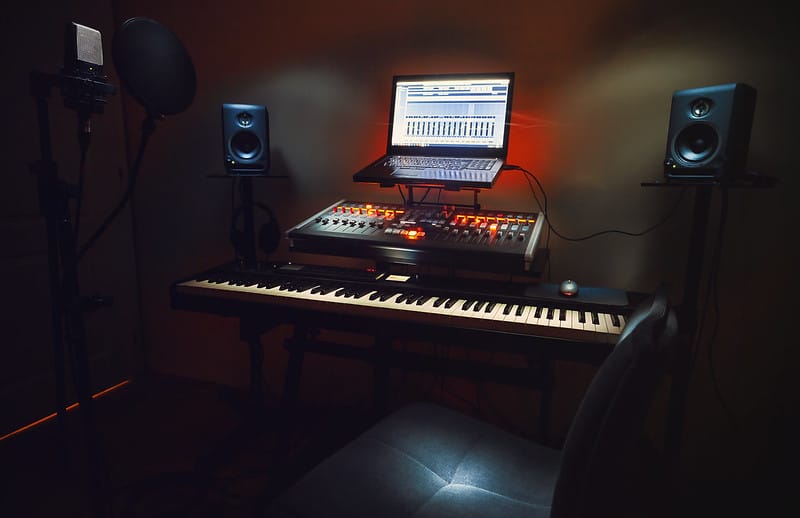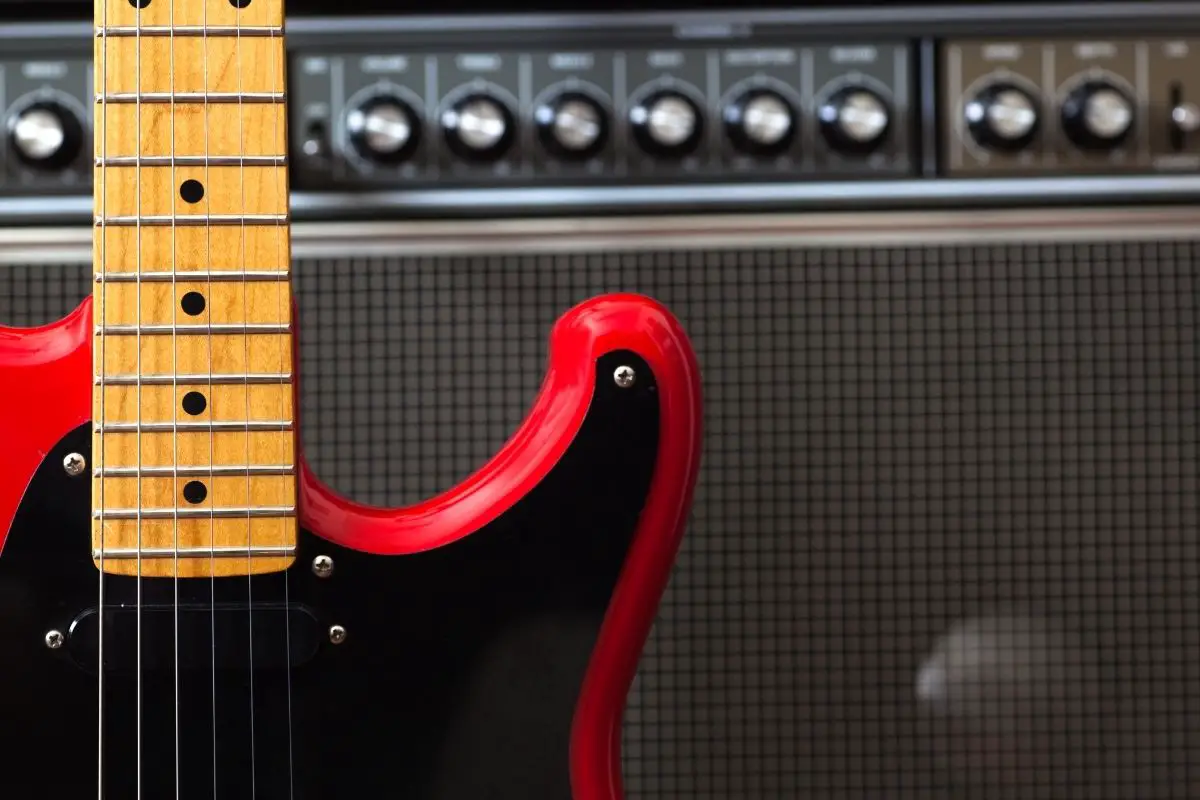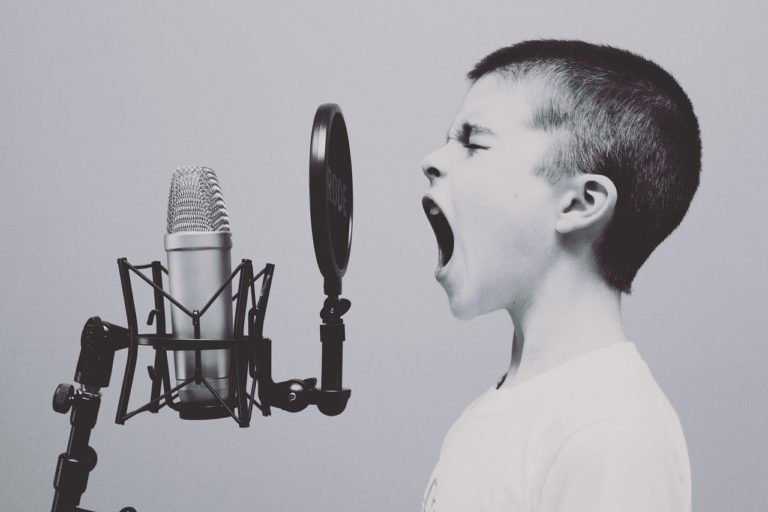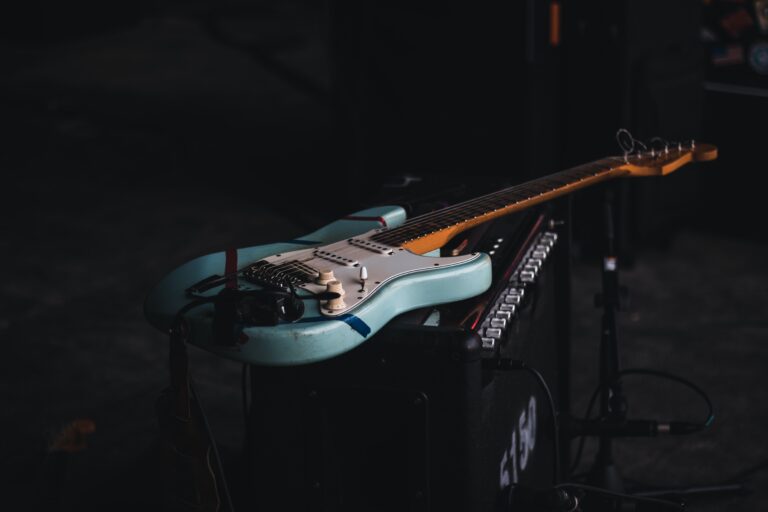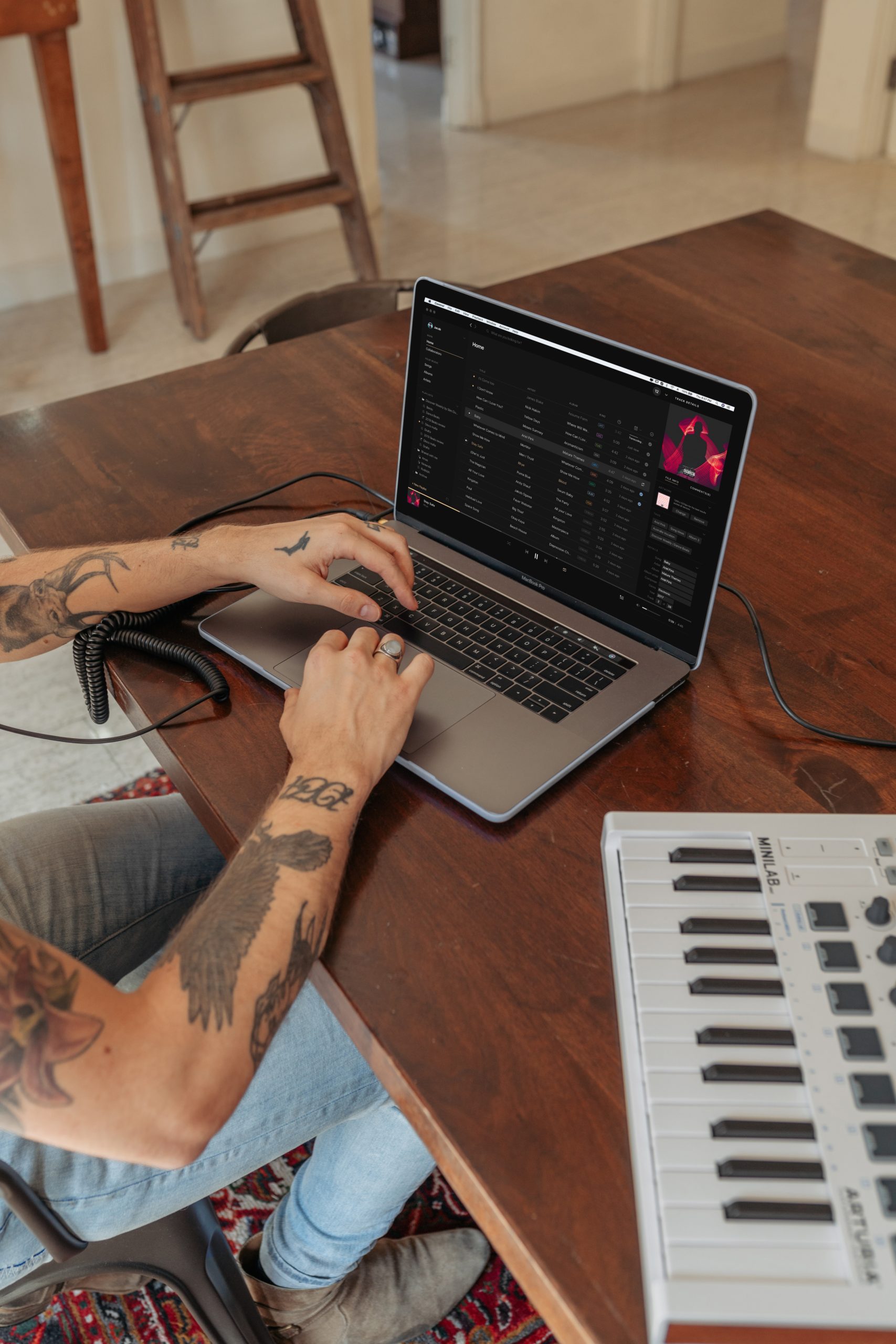Using Artist Split Sheets: The Definitive Lowdown
For anyone using artist split sheets during the recording process, you need to understand everything on this piece of paper. But why is a split sheet important?
Using artist split sheets is important for anyone working with other parties to create a composition to protect your original claim to the song.
What may seem like one innocuous document could become your ultimate lifesaver. It’s your way of stating a claim to an original work.
These documents can be tricky to fully understand, especially with legal and financial ownership on the line. That’s why it’s time to run through the definitive lowdown on using artist split sheets.
What is an artist split sheet?
A split sheet defines what everyone has done on a song. Once a song is complete, the split sheet documents how someone has physically contributed to a song and what share of these rights they will receive.
On the document, everyone’s contribution to the song will be broken down into their roles and what they contributed to the song. This could include:
- Lyrics
- Instrumentation
- Samples
It’s not very common nowadays for one person to create an entire composition. With producers, songwriters, and even other bands potentially involved, there needs to be a way to separate who’s done what on a song.
As a song is legally registered and published, the split sheet acts as a contract stating everyone who has a legal claim to the physical rights of the song.
Who should sign the split sheet?
- Music Producers who create a melody, hook, or other compositional elements. A beatmaker who creates a beat for different songs using apps or a soundboard might be considered contributing songwriter and need to sign a split sheet.
- Major recording artists: If an artist records a song, they may request an ownership interest in it. They would sign a split sheet with their negotiated split percentage recorded if this is the case.
- Music Publishers: If an artist/musician/songwriter uses a sample from another artist, the publisher of the original may ask for a share of publishing on their client’s behalf due to copyrights. The split sheet must include the owner of the sample, the publisher’s information, and their percentage of ownership in the song.
- Musicians and Vocalists: Any vocalist who creates a melody or musician who creates a bass line or other significant element of a song should sign a split sheet to be included in the songwriter’s share of ownership.
- Songwriters
When should songwriters sign the split sheet?
- Most managers, music attorneys, agents, and music publishers agree that the best time to sign a split sheet is before a songwriting or recording session. Due to the possibility that someone involved in the process could refuse to sign the sheet, or something could happen between songwriters, or bandmates, this could cause a delay or loss of time and money, especially in studio rentals or paying engineers, etc.
- The next best time to sign is after the first songwriting session. This is especially helpful when working with a songwriter for the first time. It might be worth gauging how the collaboration is going before signing the split sheet. Have the other writer take it home, read it, consult with their attorney, and ask questions.
Either way, signing the split sheet early in the process helps determine ownership rights and clarity should questions arise and helps with the registration of written works with PROs.
Why is a split sheet important? (Breaking down publishing laws and split sheets)
Artist split sheets are basically the legal contract that defines everyone covered by publishing laws during the process. These become binding once a song is registered.
In the US, there are federal laws dictating what rights an artist has to the physical work they produce. These laws state that anyone who contributes to the music and lyrics of a song has a legal claim to it.
Once a song is registered, each contributor will have the rights to their sections for the rest of their lives. This also stays with their estate until 70 years after the contributor’s passing, when the music falls into the public domain.
Should more than one person be attributed to a particular section, then the rights are based on whoever is last to pass away before the 70-year countdown begins. All this works as long as the song was registered after January 1, 1978.
For older compositions, the laws state that the publishing rights for music and lyrics extend to 75 years after the song was registered and published.
What do artist split sheets legally cover?
Although publishing laws grant owners rights to their physical works, a split sheet doesn’t fully protect you.
These documents only cover the physical sheet music and the lyrics themselves. It means that your work will not cover any recordings or how those are used.
So, if you thought that companies were using songs for a political campaign or adverts illegally, a split sheet wouldn’t give you any leg to stand on.
However, should anyone cover or use particular parts of a song without your permission, then you would be able to use your split sheet to claim your rights.
How split sheets work [real-world example]
To see what we mean and how this has played out, let’s look at how this has played out in recent years.
Perhaps the most famous example was the legal dispute between R&B megastar P. Diddy and English rock giants The Police over Diddy’s 1997 smash-hit “I’ll Be Missing You.”
In a direct rip-off, Diddy used the exact guitar riff from The Police’s signature track, “Every Breath You Take,” for the song without giving any songwriting credits to the band.
It was Sting, the band’s bassist and primary vocalist, who took offense to this and sued Diddy for the right to the song.
The judge ruled in favor of Sting, who has since been granted 100% of the publishing royalties to the song. By making this claim, it’s estimated that Sting now earns $2,000 a day from Diddy’s mishap.
Ironically, Sting’s successful claim comes despite not having his parts used in “I’ll be Missing You,” where he sang and played bass. That’s because Diddy only used the guitar riff played by fellow Police member Andy Summers.
Due to Sting being the sole credited and registered songwriter for “Every Breath You Take,” he receives all the royalties, while Andy Summers receives nothing.
This is how using artist split sheets is important no matter how big, or famous your act may be.
The split sheet process
If it’s decided that you are using artist split sheets to divide your work equally, then there is plenty to think about.
This includes working how who is going to be included in it, royalty shares, and who oversees the final process.
You should have a split sheet ready before the final sheet or document is signed, and any recording takes place. So let’s break down everything that is involved in the process:
Who’s included on a split sheet?
When it comes to the split sheet, anyone involved in the creative process needs to be on the document. No matter how big or small their contribution, they should be named on the document.
For original and new compositions, the process should be simple enough. Everyone who records an instrumental part and lyrics signs the sheet. This includes any collaborators brought into the fold, such as producers, instrumentalists, or songwriters.
However, matters get trickier if you want to use samples or pieces that sound almost identical to another song. It is here where you will need to contact the owners of that material and get their permission to use it.
Should the original owners agree, they will likely have to be included in the split sheet as well, and they will also look for a small percentage of the song’s royalties.
If an artist refuses permission, you will need to rethink the piece, as even having them on the split sheet may result in a potential legal dispute.
Working out royalty shares on your split sheet
Here is where things can potentially get messy when using artist split sheets. Everyone will want their fair share of the royalties and fight for what they are worth.
It’s here where you all need to sit down and think carefully about how much anyone has contributed to the process.
If it’s just split between everyone in a band, then it’s only fair to share everything equally, provided everyone performed their part.
The matter does become trickier with outside collaborators, so you need to think long and hard about what they have contributed to a song.
For example, if you brought in two songwriters to help with lyrics, they will both want the same share, so chat with them and agree on a concrete rate during the negotiation stage.
You also have to factor in what original composers may what if you are using samples within the piece of your work. It’s common for right holders to ask for between 5%-10% of all royalties, so keep that in mind when everyone is working the figures out.
Licensing bodies mandate that royalties have to be 100% divided before a split sheet is submitted, so you will need to go over all the figures to make sure everything adds up before submitting anything.
Finding a licensing partner for your split sheet
Finally, the last thing you will need to have in mind is that you will need a licensing body to register your song and make everything legally binding.
A licensing body, or performing rights organization, will be the neutral party that oversees everything and can also act as a mediator in terms of disputes.
Most often, the body will be a company like a record label, publishing, or licensing agency (ASCAP, BMI, SESAC) or even a creative agency (RIAA or SGA).
When you nominate a body, they will then be the ones to oversee how everything is awarded and will maintain this parity once the agreement is binding.
It’s worth remembering this when you speak to a partner and ensure they know everyone involved with the recording and songwriting process to avoid any legal hiccups further down the line.
Creating your split sheet
When creating a split sheet, you will need to find a template and fill in all the relevant information necessary to be included there.
A template is a framework form where you dictate everything that needs to be about physical contribution.
This includes your name, role, and every contribution to the creation of the piece at hand. From there, you also need to include other details, such as your royalty percentage, the publishing organization, and a timestamp once it is finished.
Furthermore, you will need to get everyone else working on the song to co-sign it, showing that all parties have agreed to what you’ve stated in the sheet.
This will have to be repeated for everyone filling out the sheet, so make sure you are on the same page before filling this out.
Once that is all done, your sheet can be submitted, ready to become a legally binding document to the physical music and words for a song.
The split sheet checklist:
- Date of document
- Song title
- All names of writers
- Role in song (lyricist, composer)
- Royalty share
- Exact contribution within the piece
- Label
- Performing rights organization
- Publisher
- Address
- Phone number
- Signatures of co-writers
- Timestamp w/date and time
What to consider when using artist split sheets
There are times when using artist split sheets may not be beneficial or necessary for everyone involved in the recording process.
Some people might not contribute anything to the song and play on it. Others may question what their overall worth is and change their part halfway through the process.
With that in mind, here are some things you might need to consider when using split sheets and the roles of some partners in your collaborating circles.
Cover composing writers only
When it comes to split sheets, you need to remember that they only cover the physical music and lyrics themselves. These won’t protect the recording themselves.
Therefore, if you use session musicians that are just playing the music that you physically wrote, there is no need to include them on your sheet.
As different copyright laws cover recordings, session musicians won’t have a direct claim unless you bring them into the writing process.
However, you do need to state this to them before you start recording any tracks down. This will then prevent any legal ramifications should they try and make a claim should a song become successful.
Finalize everything before recording
The recording process can be excessively fraught, and tensions can rise between band members. It’s when tempers are raised that someone might try to renege on what was previously agreed.
Should you not have anything finalized when these arguments break out, that contributor could hold you to ransom and demand more than what was initially.
It’s here where the publisher will turn into a judge and decide what happens next. As long as everything was signed before a dispute, then everything is generally locked in place.
If not, then you will need to re-consider amounts and get everyone to agree before a split sheet can be agreed upon by all parties.
Do your research
If you have doubts about a particular section being original, then there is only one solution: check it out.
Research the claim you think might sound similar and see if it is an original work. The last thing you will want to discover is that you lose royalties to your work because someone else submitted something that was not legally binding.
If there are any doubts, you should also speak to the original composers, who may need to be included in your sheet if the sections are too similar.
With all this potentially affecting the financial benefits you get from your songs, there is no hurt in doing some extra due diligence and ensuring that everything is up to scratch.
Using artist split sheets
At the end of the day, artist split sheets are one of the most secure ways to protect your contributions to a song.
They give you a physical claim to any words or music you produce in a piece and ensure that you are always entitled to a financial share of any smash hit.
It may take some time to understand all the different components they cover, such as knowing publishing laws and seeking out all parties that helped put the song structure together.
However, once everyone has found common ground and a publishing partner, you are ready to sign the sheet.
Once the sheet is signed, your rights are protected, and this will help overcome any potential legal headaches that may arise in the future.
With all this locked in, you can enjoy whatever rewards come from your hard work, knowing that using artist split sheets will always give you a sound platform to lean on.

